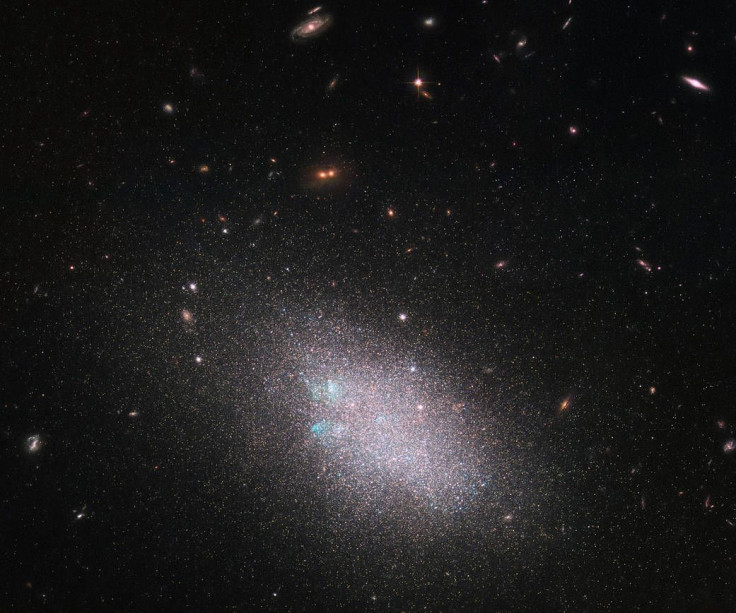NASA Hubble Captures Stunning Swarm Of Stars 15 Million Light-Years From Earth

The Hubble Space Telescope from NASA and the European Space Agency (ESA) has captured an incredible photo of a distant dwarf galaxy. The new image was taken as part of a program that studies how star regions form and cluster together.
The galaxy that Hubble photographed has been identified as UGC 685. According to the ESA, UGC 685 is significantly smaller than the Milky Way and has an irregular shape. Although it is classified as a type of spiral galaxy, it doesn’t have distinct twisting arms.
“This image from the NASA/ESA Hubble Space Telescope shows a dwarf galaxy named UGC 685,” the ESA said in a statement. “Such galaxies are small and contain just a tiny fraction of the number of stars in a galaxy like the Milky Way.”
“Dwarf galaxies often show a hazy structure, an ill-defined shape, and an appearance somewhat akin to a swarm or cloud of stars – and UGC 685 is no exception to this,” the agency added. “Classified as an SAm galaxy – a type of unbarred spiral galaxy – it is located about 15 million light-years from Earth.”
The latest image of UGC 685 was taken as part of Hubble’s Legacy ExtraGalactic UV Survey (LEGUS) program. The purpose of this program is to find star-forming regions in the galaxy. The ESA and NASA are hoping that through this program, they’ll be able to understand how star clusters are formed.
“Star formation plays a huge role in shaping its host galaxy,” the ESA stated. “By exploring these targets in detail via both new observations and archival Hubble data, LEGUS will shed light on how stars form and cluster together, how these clusters evolve, how a star’s formation affects its surroundings, and how stars explode at the end of their lives.”
According to the space agencies, Hubble has already collected multi-colored images of a total of 50 spiral and dwarf galaxies in the universe. These images were taken using the space telescope’s Wide Field Camera 3.
In the case of UGC 685, the dwarf galaxy shows a rich star-forming region despite being smaller than conventional galaxies.
© Copyright IBTimes 2024. All rights reserved.





















